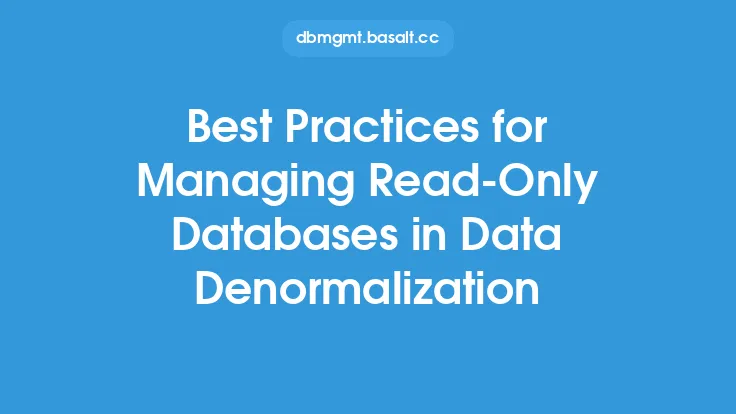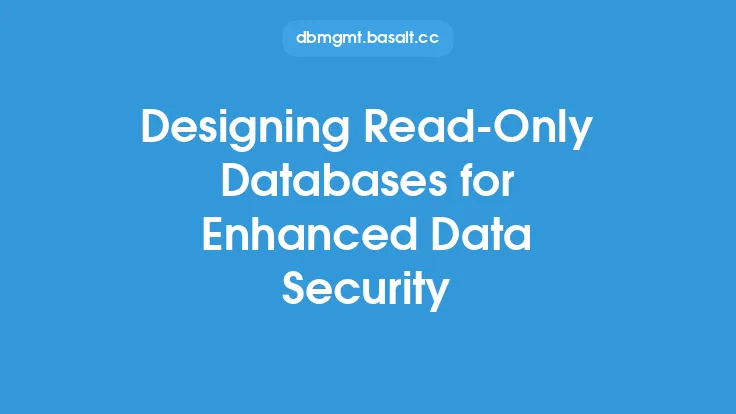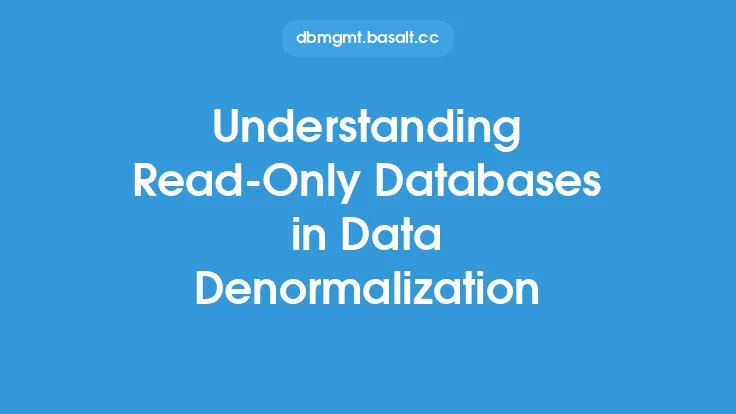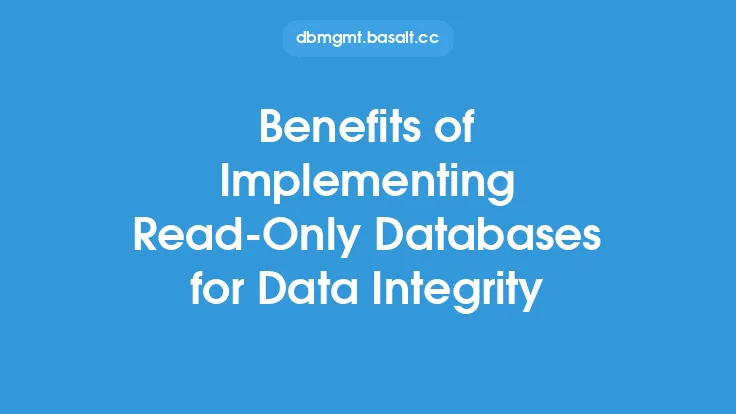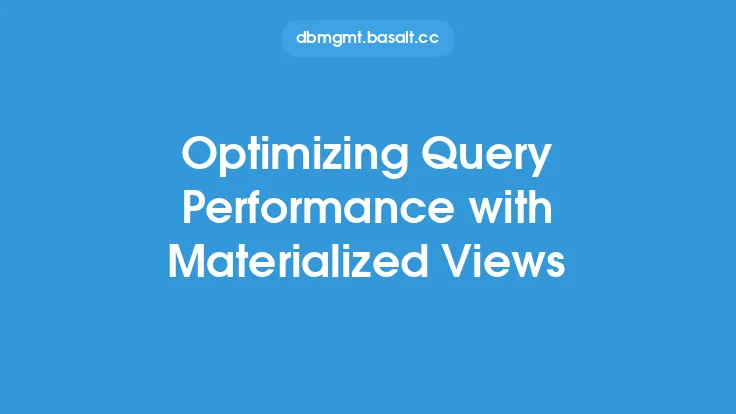When it comes to optimizing read-only databases for faster query performance, there are several key considerations to keep in mind. Read-only databases, by their very nature, are designed to provide fast and efficient access to data, without the need for write operations. However, this does not mean that they are inherently optimized for performance. In fact, read-only databases can often benefit from careful optimization to ensure that they are running at their best.
Understanding Database Optimization
Database optimization is the process of improving the performance of a database by reducing the time it takes to execute queries and improving the overall efficiency of the system. This can involve a range of techniques, from indexing and caching to query optimization and database design. When it comes to read-only databases, optimization is particularly important, as the database is only being used for reading data, and any performance improvements can have a significant impact on the overall system.
Indexing and Caching
Two of the most effective ways to optimize a read-only database are through indexing and caching. Indexing involves creating a data structure that allows the database to quickly locate specific data, without having to scan the entire database. This can be particularly effective for queries that involve filtering or sorting data, as the index can be used to quickly identify the relevant data. Caching, on the other hand, involves storing frequently accessed data in a fast and accessible location, such as RAM. This can help to reduce the time it takes to execute queries, as the data is already available in a fast and accessible location.
Query Optimization
Query optimization is another key aspect of optimizing a read-only database. This involves analyzing the queries that are being executed against the database, and identifying opportunities to improve their performance. This can involve techniques such as rewriting queries to use more efficient syntax, or using query optimization tools to identify performance bottlenecks. By optimizing queries, it is possible to significantly improve the performance of a read-only database, and reduce the time it takes to execute queries.
Database Design
The design of the database itself is also an important consideration when it comes to optimizing a read-only database. A well-designed database will be optimized for query performance, with tables and indexes structured in a way that allows for fast and efficient access to data. This can involve techniques such as denormalization, which involves storing data in a way that reduces the need for joins and other complex queries. By designing the database with performance in mind, it is possible to create a read-only database that is optimized for fast and efficient query performance.
Storage and Hardware
The storage and hardware used to host the read-only database can also have a significant impact on performance. Using fast and efficient storage, such as solid-state drives (SSDs), can help to improve query performance, as data can be accessed more quickly. Similarly, using powerful hardware, such as high-performance servers, can help to improve the overall performance of the system. By investing in high-quality storage and hardware, it is possible to create a read-only database that is optimized for fast and efficient query performance.
Maintenance and Monitoring
Finally, regular maintenance and monitoring are essential for ensuring that a read-only database remains optimized for performance over time. This can involve tasks such as updating statistics, rebuilding indexes, and monitoring query performance. By regularly maintaining and monitoring the database, it is possible to identify performance bottlenecks and make adjustments as needed, ensuring that the database remains optimized for fast and efficient query performance.
Advanced Optimization Techniques
For databases that require even further optimization, there are several advanced techniques that can be used. These include techniques such as data partitioning, which involves dividing large tables into smaller, more manageable pieces, and parallel query execution, which involves executing multiple queries simultaneously to improve overall performance. By using these advanced techniques, it is possible to create a read-only database that is highly optimized for performance, and can handle even the most demanding query workloads.
Conclusion
Optimizing a read-only database for faster query performance requires a combination of careful planning, design, and maintenance. By using techniques such as indexing, caching, query optimization, and database design, it is possible to create a read-only database that is optimized for fast and efficient query performance. Additionally, investing in high-quality storage and hardware, and regularly maintaining and monitoring the database, can help to ensure that the database remains optimized over time. By following these best practices, it is possible to create a read-only database that is highly optimized for performance, and can provide fast and efficient access to data for even the most demanding applications.
